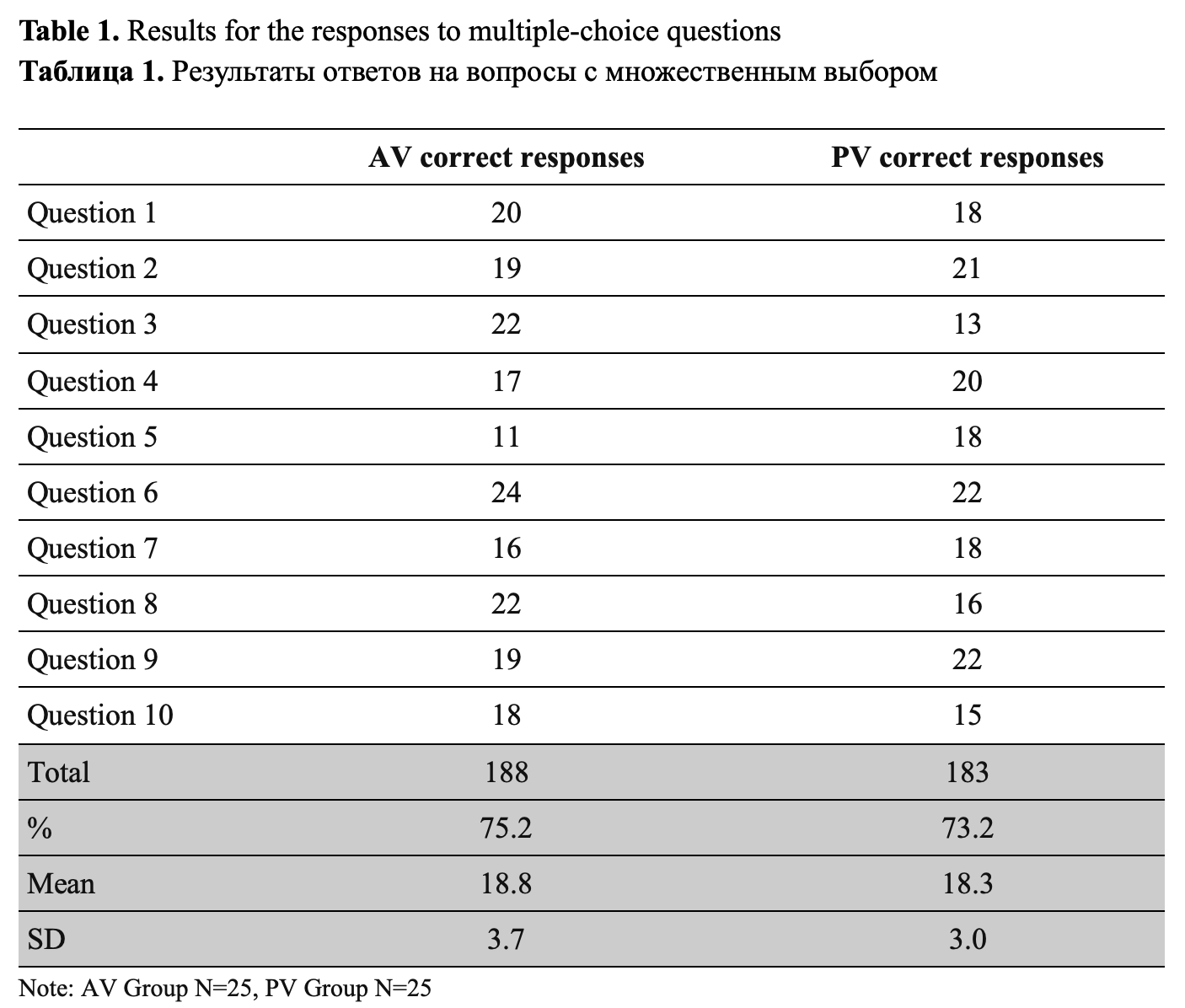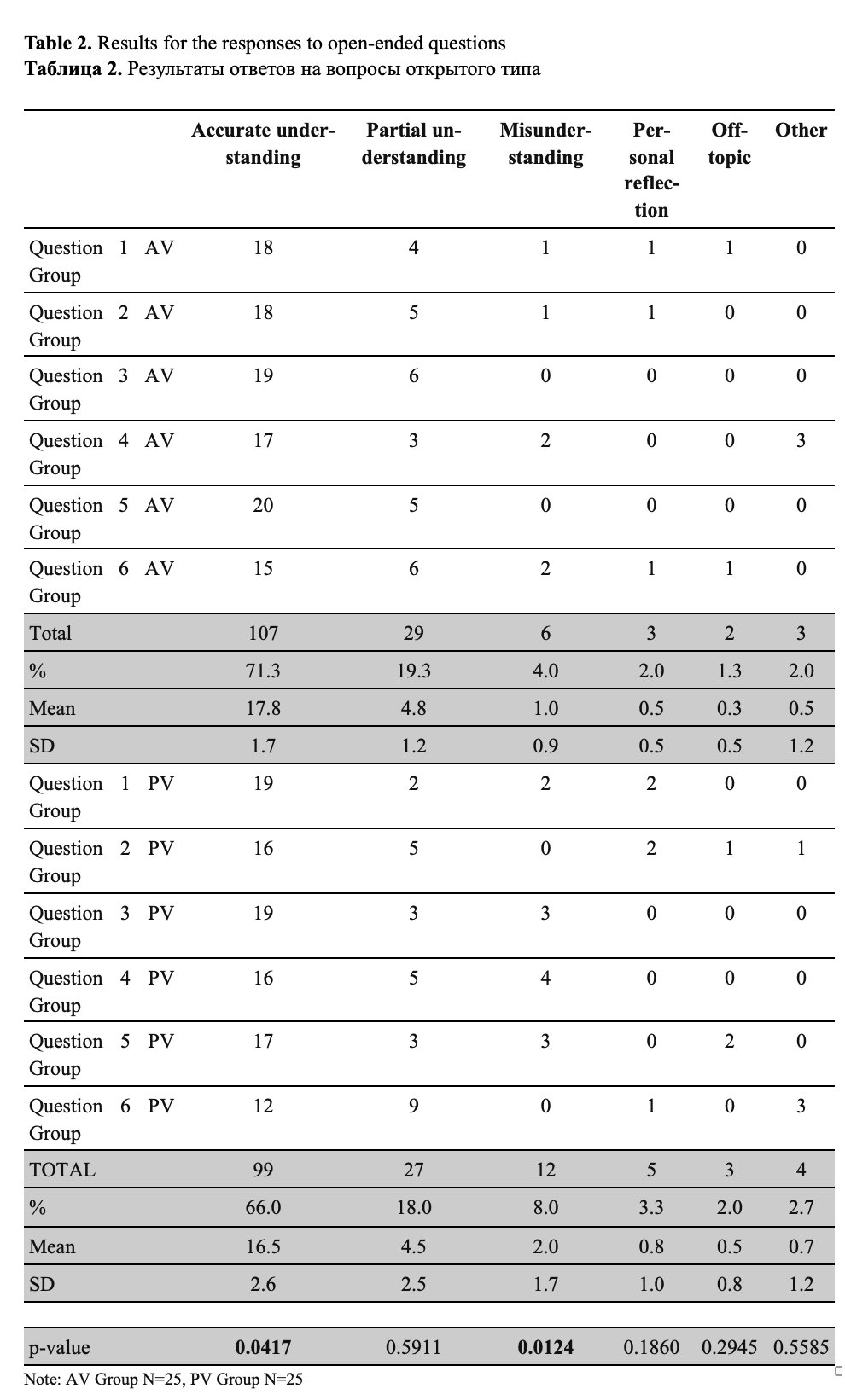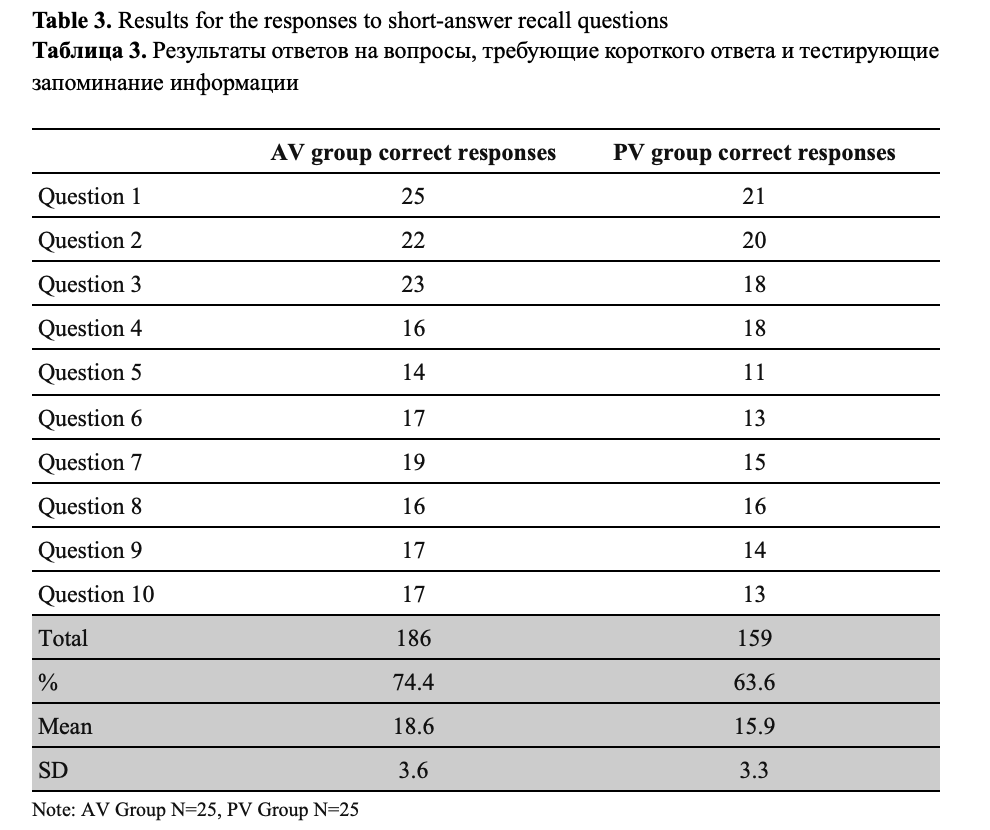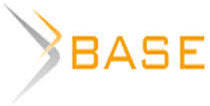Cognitive engagement in scientific writing: Empirical evidence on research data processing variation
The study investigates the impact of active and passive voice on the comprehension of research articles among readers with varying language proficiency levels, addressing the gap in understanding how language style can influence the interpretation of research findings. The methodological approach incorporated a pre-test survey, a reading comprehension task consisting of multiple-choice questions, open-ended questions, and short-answer recall questions, as well as a post-test survey. A total of 50 participants were recruited and assigned to either the active voice (AV) group or the passive voice (PV) group, with 25 participants in each group. The study analyzed their comprehension, perceived understanding, satisfaction with the reading experience, perceived credibility of the article content, and preference for language style using descriptive statistics. The findings revealed that the AV group demonstrated better overall comprehension, particularly in the short-answer recall questions, where they scored significantly higher than the PV group. Additionally, the AV group reported higher perceived understanding and a more satisfying reading experience, while the PV group perceived the article content as more credible. Based on the findings, the authors propose recommendations to focus on three key points: using active voice for enhanced comprehension in complex narratives; utilizing active voice for improved recall of specific data-driven information; and implementing passive voice to enhance perceived credibility. The study is limited by its small sample size and the use of a single article per respondent group, which may influence the extent to which the findings apply to other texts. Study findings have implications for researchers, editors, and the broader scientific community, attesting to the importance of striking a balance between the use of voices in research articles to optimize comprehension and accessibility.
Figures




Grishechko, E. G., Tomalin, B. (2025). Cognitive engagement in scientific writing: Empirical evidence on research data processing variation, Research Result. Theoretical and Applied Linguistics, 11 (2), 54–79.


















While nobody left any comments to this publication.
You can be first.
Akopova, A. S. (2023). English for Specific Purposes: Tailoring English language instruction for history majors, Training, Language and Culture, 7 (3): 31–40. https://dx.doi.org/10.22363/2521-442X-2023-7-3-31-40(In English)
Bailey, S. (2025). Academic writing: A handbook for international students, Routledge, London. https://doi.org/10.4324/9781003509264(In English)
Bailin, A. and Grafstein, A. (2001). The linguistic assumptions underlying readability formulae: A critique, Language & Communication, 21 (3): 285–301. https://dx.doi.org/10.1016/S0271-5309(01)00005-2(In English)
Balashov, E., Pasichnyk, I. and Kalamazh, R. (2021). Metacognitive awareness and academic self-regulation of HEI students, International Journal of Cognitive Research in Science, Engineering and Education (IJCRSEE), 9 (2): 161–172. https://doi.org/10.23947/2334-8496-2021-9-2-161-172(In English)
Bonsall, S. B., Leone, A. J., Miller, B. P. and Rennekamp, K. (2017). A plain English measure of financial reporting readability, Journal of Accounting and Economics, 63 (2-3): 329–357. https://dx.doi.org/10.1016/j.jacceco.2017.03.002(In English)
Brown, R. B. (2006). Doing your dissertation in business and management: The reality of researching and writing, SAGE Publications, London. (In English)
Brysbaert, M. (2019). How many words do we read per minute? A review and meta-analysis of reading rate, Journal of Memory and Language, 109: 104047. https://dx.doi.org/10.1016/j.jml.2019.104047(In English)
Chi, M. T. and Wylie, R. (2014). The ICAP framework: Linking cognitive engagement to active learning outcomes, Educational Psychologist, 49: 219-243. http://dx.doi.org/10.1080/00461520.2014.965823(In English)
Cheung, Y. L. and Lau, L. (2020). Authorial voice in academic writing, Ibérica, 39: 215–242. https://dx.doi.org/10.17398/2340-2784.39.215(In English)
Ding, D. D. (2002). The passive voice and social values in science, Journal of Technical Writing and Communication, 32 (2): 137–154. https://dx.doi.org/10.2190/EFMR-BJF3-CE41-84KK(In English)
Dunleavy, P. (2003). Authoring a PhD: How to plan, draft, write and finish a doctoral thesis or dissertation. Palgrave, London. (In English)
Erdemir, F. (2013). How to write a materials and methods section of a scientific article? Turkish Journal of Urology, 39 (Suppl 1): 10–15. https://dx.doi.org/10.5152/tud.2013.047(In English)
Ferreira, F. (2021). In defense of the passive voice, American Psychologist, 76 (1): 145–153. https://dx.doi.org/10.1037/amp0000620(In English)
Grishechko, E. G. (2023). Language and cognition behind simile construction: A Python-powered corpus research, Training, Language and Culture, 7 (2): 80–92. https://dx.doi.org/10.22363/2521-442X-2023-7-2-80-92(In English)
Hudson, R. (2013). The struggle with voice in scientific writing, Journal of Chemical Education, 90 (12): 1580. https://dx.doi.org/10.1021/ed400243b(In English)
Inzunza, E. R. (2020). Reconsidering the use of the passive voice in scientific writing, The American Biology Teacher, 82 (8): 563–565. https://dx.doi.org/10.1525/abt.2020.82.8.563(In English)
Kaphingst, K. A., Kreuter, M. W., Casey, C., Leme, L., Thompson, T., Cheng, M. R., Jacobsen, H., Sterling, R., Oguntimein, J., Filler, C., Culbert, A., Rooney, M. and Lapka, C. (2012). Health Literacy INDEX: Development, reliability, and validity of a new tool for evaluating the health literacy demands of health information materials, Journal of Health Communication, 17 (sup3): 203–221. https://dx.doi.org/10.1080/10810730.2012.712612(In English)
Kerwer, M., Chasiotis, A., Stricker, J., Günther, A. and Rosman, T. (2021). Straight from the scientist’s mouth: Plain language summaries promote laypeople’s comprehension and knowledge acquisition when reading about individual research findings in psychology, Collabra: Psychology, 7 (1): 18898. https://dx.doi.org/10.1525/collabra.18898(In English)
Kotz, S. A., Holcomb, P. J. and Osterhout, L. (2008). ERPs reveal comparable syntactic sentence processing in native and non-native readers of English, Acta Psychologica, 128 (3): 514–527. https://dx.doi.org/10.1016/j.actpsy.2007.10.003(In English)
Leong, A. P. (2020). The passive voice in scientific writing through the ages: A diachronic study, Text & Talk, 40 (4): 467–489. https://dx.doi.org/10.1515/text-2020-2066(In English)
Leskelä, L., Mustajoki, A. and Piehl, A. (2022). Easy and plain languages as special cases of linguistic tailoring and standard language varieties, Nordic Journal of Linguistics, 45 (2): 194–213. https://dx.doi.org/10.1017/S0332586522000142(In English)
Macmillan, K. and Weyes, J. (2007a). How to write essays and assignments, Pearson Education, London. (In English)
Macmillan, K. and Weyes, J. (2007b). How to write dissertations and project reports, Pearson Education/Prentice Hall, London. (In English)
Malyuga, E. N. and McCarthy, M. (2021). “No” and “net” as response tokens in English and Russian business discourse: In search of a functional equivalence, Russian Journal of Linguistics, 25 (2), 391–416. https://dx.doi.org/10.22363/2687-0088-2021-25-2-391-416(In English)
Minton, T. D. (2015). In defense of the passive voice in medical writing, The Keio Journal of Medicine, 64 (1): 1–10. https://dx.doi.org/10.2302/kjm.2014-0009-RE(In English)
Perham, N., Marsh, J. E. and Jones, D. M. (2009). Short article: syntax and serial recall: How language supports short-term memory for order, Quarterly Journal of Experimental Psychology, 62 (7): 1285–1293. https://dx.doi.org/10.1080/17470210802635599(In English)
Plavén-Sigray, P., Matheson, G. J., Schiffler, B. C. and Thompson, W. H. (2017). The readability of scientific texts is decreasing over time, eLife, 6: e27725. https://dx.doi.org/10.1101/119370(In English)
Schriver, K. A. (2014). On developing plain language principles and guidelines, in Hallik, K. and Harrison Whiteside, K. (eds.), Clear communication: A brief overview. Institute of the Estonian Language, Tallinn, 55–69. (In English)
Sigel, T. (2009). How passive voice weakens your scholarly argument, Journal of Management Development, 28 (5): 478–480. https://dx.doi.org/10.1108/02621710910955994(In English)
Solomon, E. D., Mozersky, J., Wroblewski, M. P., Baldwin, K., Parsons, M. V., Goodman, M. and DuBois, J. M. (2022). Understanding the use of optimal formatting and plain language when presenting key information in clinical trials, Journal of Empirical Research on Human Research Ethics, 17 (1-2): 177–192. https://dx.doi.org/10.1177/15562646211037546(In English)
Staples, S., Egbert, J., Biber, D. and Gray, B. (2016). Academic writing development at the university level: Phrasal and clausal complexity across level of study, discipline, and genre, Written Communication, 33 (2): 149–183. https://dx.doi.org/10.1177/0741088316631527(In English)
Stoll, M., Kerwer, M., Lieb, K. and Chasiotis, A. (2022). Plain language summaries: A systematic review of theory, guidelines and empirical research, Plos One, 17 (6): e0268789. https://dx.doi.org/10.1371/journal.pone.0268789(In English)
Sweller, J., van Merriënboer, J. J. and Paas, F. (2019). Cognitive architecture and instructional design: 20 years later, Educational Psychology Review, 31: 261–292. https://dx.doi.org/10.1023/a:1022193728205(In English)
Tamimy, M., Setayesh Zarei, L., and Khaghaninejad, M. S. (2022). Collectivism and individualism in US culture: An analysis of attitudes to group work, Training, Language and Culture, 6: (2): 20-34. https://doi.org/10.22363/2521-442X-2022-6-2-20-34
Tarone, E., Dwyer, S., Gillette, S. and Icke, V. (1998). On the use of the passive and active voice in astrophysics journal papers: With extensions to other languages and other fields, English for Specific Purposes, 17 (1): 113–132. https://dx.doi.org/10.1016/S0889-4906(97)00032-X(In English)
Temnikova, I., Vieweg, S. and Castillo, C. (2015, May). The case for readability of crisis communications in social media, Proceedings of the 24th International Conference on World Wide Web, Association for Computing Machinery, Florence, Italy, 1245–1250. https://dx.doi.org/10.1145/2740908.2741718(In English)
Tucan, G. (2013). The reader’s mind beyond the text: The science of cognitive narratology, Romanian Journal of English Studies, 10 (1): 302–311. https://dx.doi.org/10.2478/rjes-2013-0029(In English)
Turfler, S. (2015). Language ideology and the plain-language movement: How straight-talkers sell linguistic myths, Legal Communication & Rhetoric, 12: 195–218. (In English)
Wanner, A. (2009). Deconstructing the English passive, Mouton de Gruyter, Berlin. (In English)
White, B. (2000). Dissertation skills for business and management students, Thompson Learning, London. (In English)
Yousef, H., Karimi, L. and Janfeshan, K. (2014). The relationship between cultural background and reading comprehension, Theory & Practice in Language Studies, 4 (4): 707–714. https://dx.doi.org/10.4304/tpls.4.4.707-714(In English)
Zarcadoolas, C. (2011). The simplicity complex: Exploring simplified health messages in a complex world, Health Promotion International, 26 (3): 338–350. https://dx.doi.org/10.1093/heapro/daq075(In English)
Zuljan, D., Valenčič Zuljan, M. and Pejić Papak, P. (2021). Cognitive constructivist way of teaching scientific and technical contents, International Journal of Cognitive Research in Science, Engineering and Education (IJCRSEE), 9 (1): 23–36. https://doi.org/10.23947/2334-8496-2021-9-1-23-36(In English)
This publication has been supported by the RUDN University Scientific Projects Grant System, project No 061011-0-000.